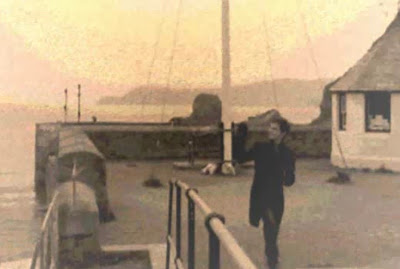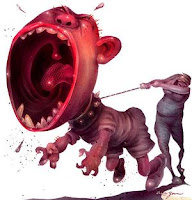These are selected screen shots from my first film. I shall not do a 'how I made it' thing, in the style of Doctor Who Confidential, for I feel such things spoil the magic of a piece. However, a word or two on how it ended up looking as it does will provide some context to my other thoughts.
The image quality and the light were not especially good. I had intended to keep the film in colour, but I realised sepia tone on a very old style finish would neutralise the problems very effectively and create at the same time a wonderful, evocative sequence that could easily be pre-Great War. For the narration, there is only one passage that could so perfectly capture both the pastoral and the wistful that the film suggests and that is King Henry VI, pining for the shepherd's life as factions war over his crown in Richard Duke of York, aka Henry VI Part 3, II.5:
Ah, what a life were this! How sweet! How lovely!
Gives not the hawthorn bush a sweeter shade
To shepherds looking on their seely sheep
Than doth a rich embroidered canopy
To kings that fear their subjects' treachery?
O yes, it doth - a thousandfold it doth.
II.5.41-46
The pre-war finish to the images and the mid-war context of Henry's anguish tie in nicely together and lead me to consider anew something which used to fascinate me as a boy. Looking at pictures in GCSE history text books and footage from commemorative documentaries on television, I always struggled to imagine life behind the colourless jumping frames. The tommies in the trenches seemed to fight a sepia war and the Second World war was a monochrome war. It is so natural to assume that life was this colour, so odd to remind yourself that it was not and so very difficult to grasp how it might have been instead.
I, however, captured these stills from footage which was colour, smooth in motion and correct in pace. Well do I know just how vast is the distance between the reality as it was yesterday evening and the representation that I have delivered to you today. Perhaps that distance is why the past feels like it is such a different country?
Imagine for a moment that these pictures are of a man who died in the trenches, the only three pieces of evidence remaining that he ever lived. How haunting would they seem? Take another look. How would you imagine the life that he lived before he lost it? Would you study his expression to see if he were a happy man? Whom might he be waving to from the harbour wall? - is this man in secret love? Did people fall in love before the war? Did they have affairs?
It's easy to imagine, that because those times seem so very different to us from this distance, the people were equally different. But behind those three lonely pictures would have been a man just like me.
















